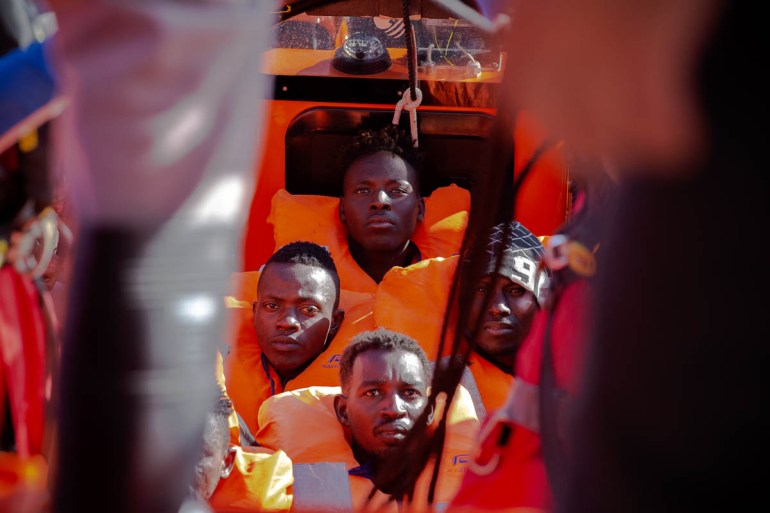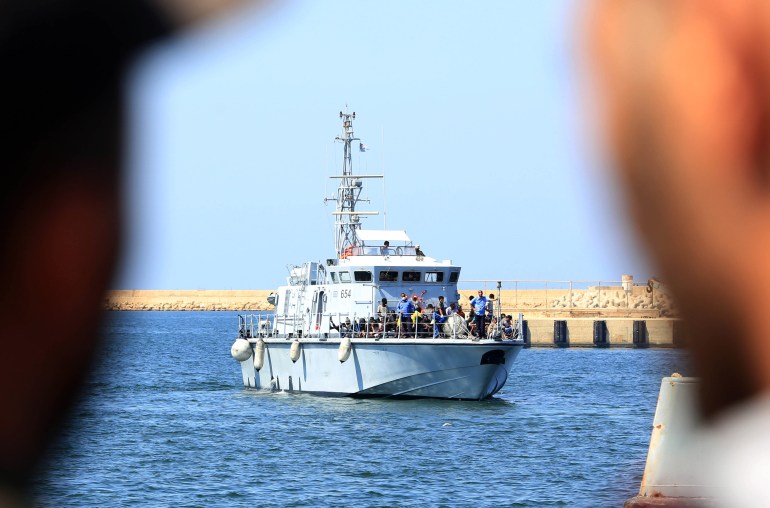In a report released on Wednesday, the UN’s International Organization for Migration (IOM) said that between January and March 2023, 441 migrants and refugees drowned in the Central Mediterranean. But the IOM has warned that the figure is likely an undercount of the true number of fatalities.
The Central Mediterranean has been described by the United Nations High Commissioner for Refugees (UNHCR) as the most dangerous migration route in the world, where one in six people who depart the shores of North Africa on small boats, seeking refuge or better economic opportunities in Europe, die on their journeys.
Since 2014, more than 20,700 people have drowned or disappeared in the Central Mediterranean while making the crossing.
These migrants flee poverty, conflict, war, forced labour, female genital mutilation, corrupt governments and personal threats.
“In life, when you see you’ve lost everything, you’re not afraid of anything anymore,” a migrant from the Central African Republic told Al Jazeera. “You don’t see the waves. You just see a boat. And that’s your chance to get your freedom again.”
In addition to the casualty figures are the ones forcibly returned, especially to Libya, described as “hell” by those who survived the ordeal on their transit.
Since February 2017, more than 36,000 people have been intercepted by the Libyan coastguard and returned to the North African country, UN figures show.
Oliver Kulikowski, of Sea-Watch, a Germany-based search-and-rescue (SAR) organisation operating in the Mediterranean, told Al Jazeera that while the rubber dinghies that migrants and refugees use to cross the Central Mediterranean have been replaced by bigger fishing boats, they are still dangerous.
“These people have no choice,” Kulikowski said, adding that many of them continue to embark on the journey with the hope that they will survive.

IOM highlighted that delays and gaps in state-led SAR missions on the route were a factor in at least six incidents this year, leading to the deaths of at least 127 people.
The complete absence of response to a seventh case led to the deaths of at least 73 people, it added.
“The most urgent step is to strengthen SAR at sea as well as disembarkation,” an IOM spokesperson told Al Jazeera on Wednesday.
“Search, rescue and disembarkation must become more responsive and swift, cooperative and predictable among all actors at sea to avoid further loss of life.
“Addressing the multiple causes pushing people to try these perilous sea crossings is also crucial. Key to this is undermining the smugglers’ business model by expanding and improving access to safe, regular migration channels and pathways to protection, and is a measure that needs much greater priority.”
Earlier this week, a vessel with around 400 migrants and refugees onboard was reportedly adrift between Italy and Malta for two days before being attended to by the Italian coastguard.
Italian authorities undertook a SAR operation “only once the boat reached their SAR region”, sea rescue support service Alarm Phone told Al Jazeera.

State of emergency
On Tuesday, Italy declared a state of emergency in an effort to manage a surge in migration along its southern shores, claiming the move will aid better management of arrivals and repatriation facilities.
Italy’s Interior Ministry reported that around 31,300 migrants and refugees have arrived in the country so far this year, up from around 7,900 in the same period last year.
“With more than 20,000 deaths recorded on this route since 2014, I fear that these deaths have been normalised. States must respond,” IOM Director General António Vitorino said, highlighting the lives lost due to delays and gaps in state-led SAR operations.
“We need to see proactive state-led coordination in search-and-rescue efforts.”
Last month, more than 1,000 people were brought to safety at two Italian ports after the overcrowded boats they were on encountered problems in the Mediterranean. Two weeks prior to that, at least 76 people died in a shipwreck.
The European Union has reportedly spent more than 90 million euros ($98m) in funding and training the Libyan coastguard to stop the crossings.
Reporting by Priyanka Shankar, Hafsa Adil and Faras Ghani
